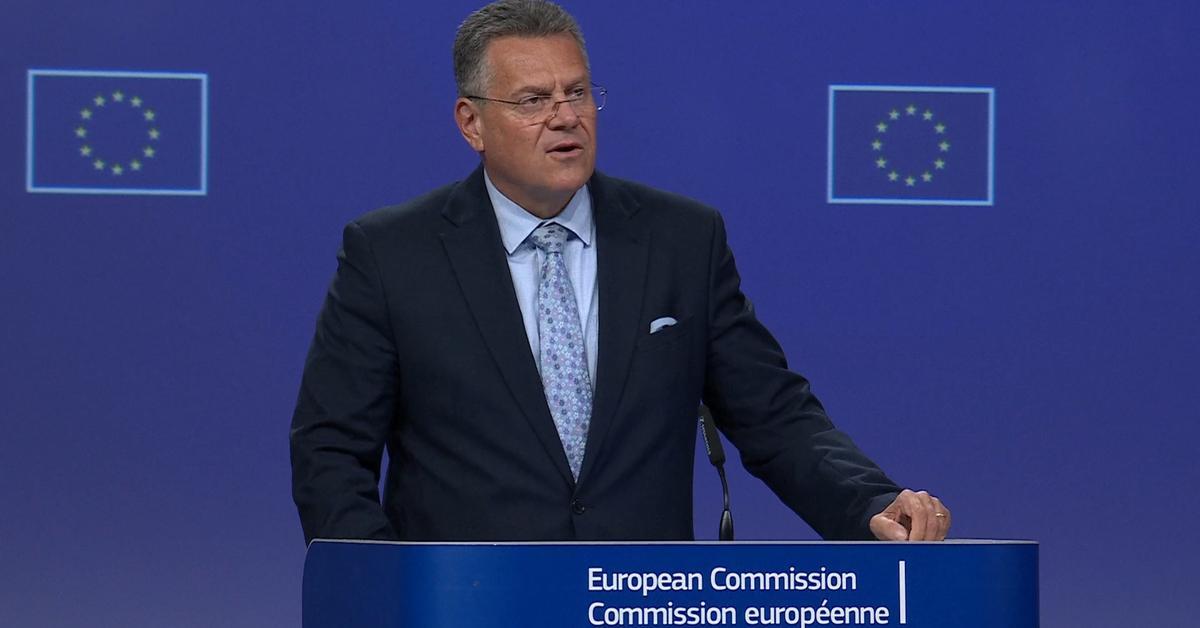BarcelonaThe European Union and the United States have agreed in writing in a joint document, known as a ‘joint agreement,’ on the terms of the trade agreement reached at the end of July by European Commission President Ursula von der Leyen and US President Donald Trump to avoid a tariff war.
At that meeting, which took place in Scotland, both economies agreed to a general tariff of 15% maximum on European exports, which was a reduction from the 30% tariff that Trump had been threatened with. In return, the EU must purchase US liquefied natural gas, oil, and nuclear energy products worth €700 billion over the next three years. According to the agreement published today, this will help replace Russian gas and oil in the European Union market.
The main new features in this document published today focus on the automotive sector, chemical products, and wines, cavas, and spirits. The United States pledged to replace the current 27.5% tariffs on European cars and their parts when the European Union initiated the process of reducing tariffs on US products. However, the EU Trade Commissioner, Maros Sefcovic, said in a press conference on Thursday that if they present the proposal this month, the reduction in tariffs on cars to 15% would be applied retroactively from August 1. However, while the meeting in Scotland between Trump and Von der Leyen still had to resolve what tariffs would be imposed on European semiconductors, chemical products, and pharmaceuticals, the document released this Thursday includes them in the package limited to 15%.
Wines and cavas are excluded from the agreement.
Another sector that was waiting to be finalized in the fine print of the agreement was wines, cavas, and spirits, which had initially been left out of the political agreement, as Von der Leyen stated from Scotland on July 27. However, days later, the European Commission (EC) spokesperson for trade, Olof Gill, argued that they were. 5 As it turns out, the trade agreement “still” does not include the wines, cavas, and spirits sector, as Sefcovic explained in a press conference. “We didn’t get this one. But I can tell you that there is a clear commitment from the European Commission to put it on the table,” he added.
“Regarding steel, the EU and the US intend to work on solutions to ensure secure supply chains, including tariff-rate quotas, while cooperating on measures to protect their economies from overcapacity,” the European Union explained in a statement, referring to a sector that is currently excluded from the end-of-July agreement, along with aluminum. The day after the agreement, the European sector strongly criticized this exclusion.
The only products exempt from tariffs, and on which the United States will either impose no tariffs or will tax them at rates close to zero, are non-available natural resources, including cork, all aircraft and their garments, generic pharmaceutical products and their ingredients.
The impact on Catalonia
The consequences of the trade agreement, which was political a month ago and is now on paper, are therefore somewhat clearer for Catalonia, although the Catalan economy and its productive fabric will have to wait to determine the impact of these tariffs, as their scope also depends on the global tariff domino effect. However, if the 15% reduction for the automotive sector materializes, it is good news because although Catalonia barely exports vehicles to the United States, it does send components and participates in the production chain of vehicles that other European countries do export to the United States.
Regarding chemicals, the Catalan industry in this sector has had the certainty since Thursday that the tariffs to which they are exposed will not exceed 15%, while Catalan wine and cava producers have seen how the EU’s certainties have been left on paper. The exclusion of this sector does not have a major impact on the Catalan economy, but it is a severe blow to the sector, especially for smaller wineries, which have their entire production in Catalonia. Last year, they sold still and sparkling wines worth €78.8 million to the US market, accounting for 13% of Catalan wine exports outside Spain and 2% of all Catalan exports to the United States, according to Prodeca.
